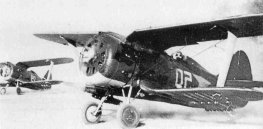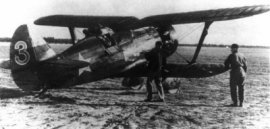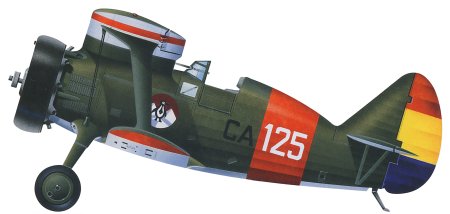
Polikarpov I-15/153
Designed by Polikarpov while he was in prison, the biplane I-15 'Chaika' (Seagull) was involved in many air battles in the 1930s from Mongolia to Spain. The aircraft was continually improved; the final I-153 was one of the most capable biplane fighters ever built. Displaying excellent manoeuvrability, the I-15 was still in service in large numbers in 1941, by which time it had been rendered obsolete.
When he designed a replacement for the earlier I-5, Polikarpov retained the biplane formula but created a gull-wing shape leading to the nickname Seagull. Early versions were powered by an American Wright Cyclone engine driving a Russian propeller. First flown in 1933, the aircraft displayed astonishing agility.
Production began in 1934 and the armament was doubled to four guns with a high reserve of ammunition. The I-15 had an active combat life, fighting the Japanese as the battle of Khalkin Gol and in China. The aircraft also served the Rupublican cause in Spain and fought on both sides in the Finnish campaign in 1940.
The Soviets tried to prolong the life of the I-15 with various improvements, such as revised cowlings and more powerful engines, for the I-15bis, I-152 and I-153 models. Even with turbocharged engines, however, the performance was not vastly improved and Polikarpov turned to the monoplane I-16 which was very similar. Over 1000 'Chaikas' were still in service with the USSR in 1941.
 |
 |
 |
| The bizarre I-153/DM-4 was an experimental version used to test ramjet-assisted propulsion. |
Polikarpov fighters fought with distinction in the late 1930s, taking on aircraft like the CR.32 and Ki-27. |
These bomb-armed 'Chaikas'are being started up by trucks using a Hucks starter. |
|
Polikarpov I-15/153 (Technical Specification) |
| Role |
Single-seat radial-engined biplane fighter and ground-attack aircraft |
| Manufacturer |
Polikarpov |
| Maximum Speed |
367 kmh (228 mph) |
| Combat radius |
550 km (342 mil) |
| Ceiling |
9,800 meters (32,150 feet) |
Weight
Empty
Maximum Takeoff |
1,130 kg (2,491 lbs)
1,390 kg (3,064 lbs) |
Dimensions
Wingspan
Length
Height
Wing Area |
9.75 meters (32 ft)
6.10 meters (20 ft 1 in)
2.19 meters (7 ft 2 in)
23.55 square meters (253 sq ft) |
| Engines |
One Wright Cyclone F-3 radial piston engines which provides 528-kW (708 hp) |
| Armament |
Four PV-1 7.62 mm (0.30 cal) machine-guns with 3000 rounds
Four 20 kgs (44 lbs) bombs or (I-153) six rockets |
Photo Gallery
Click here to submit your photo
| Have A Passion For Aircraft? |
Subscribe to our 14 series FREE newsletter
delivered weekly on World War 2 Aircraft factfile... |
| NB:- We hate spam as much as you do, so your email address will NEVER be shared with or sold to anyone else. That's a Guarantee. |
|
|





